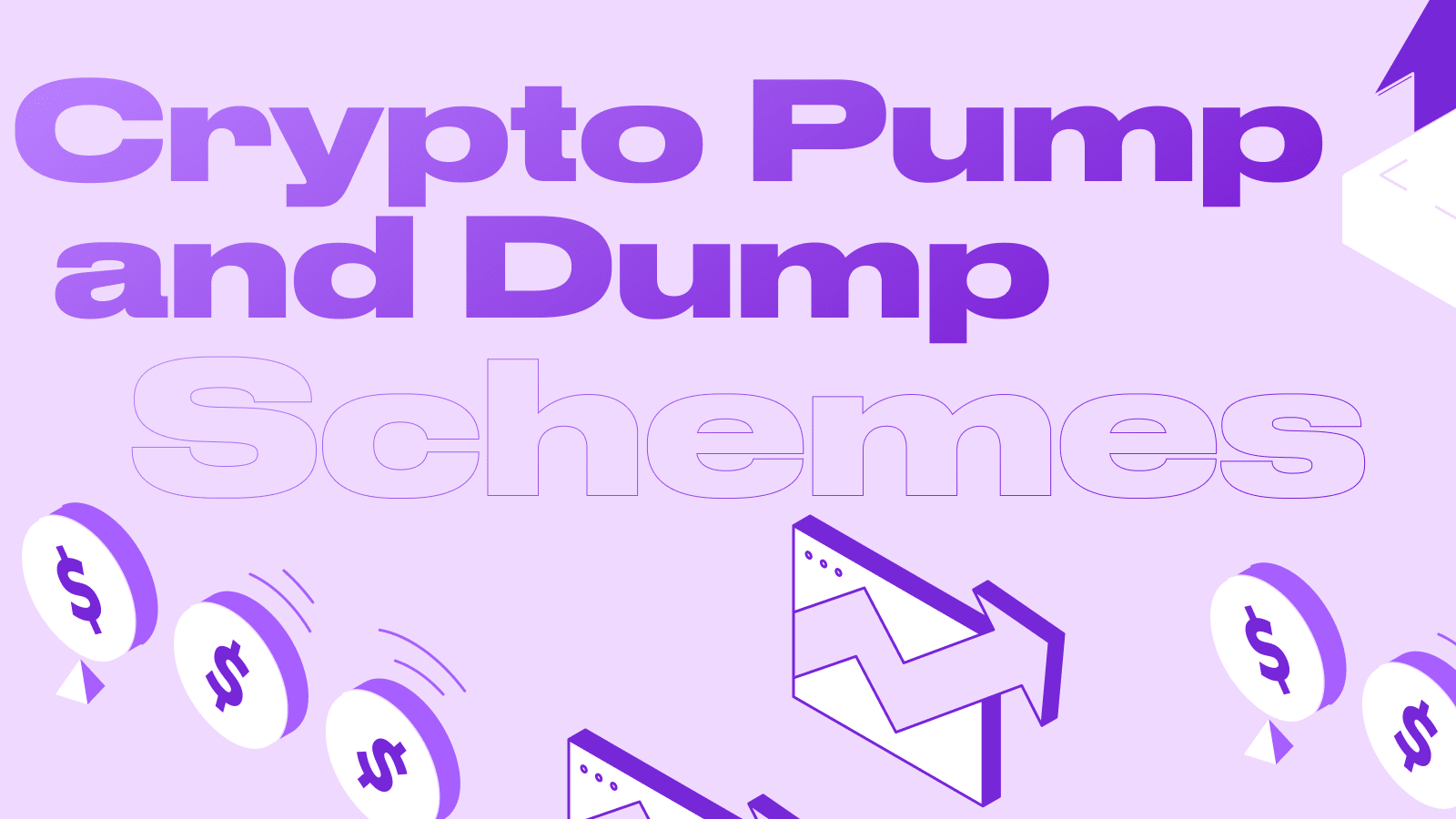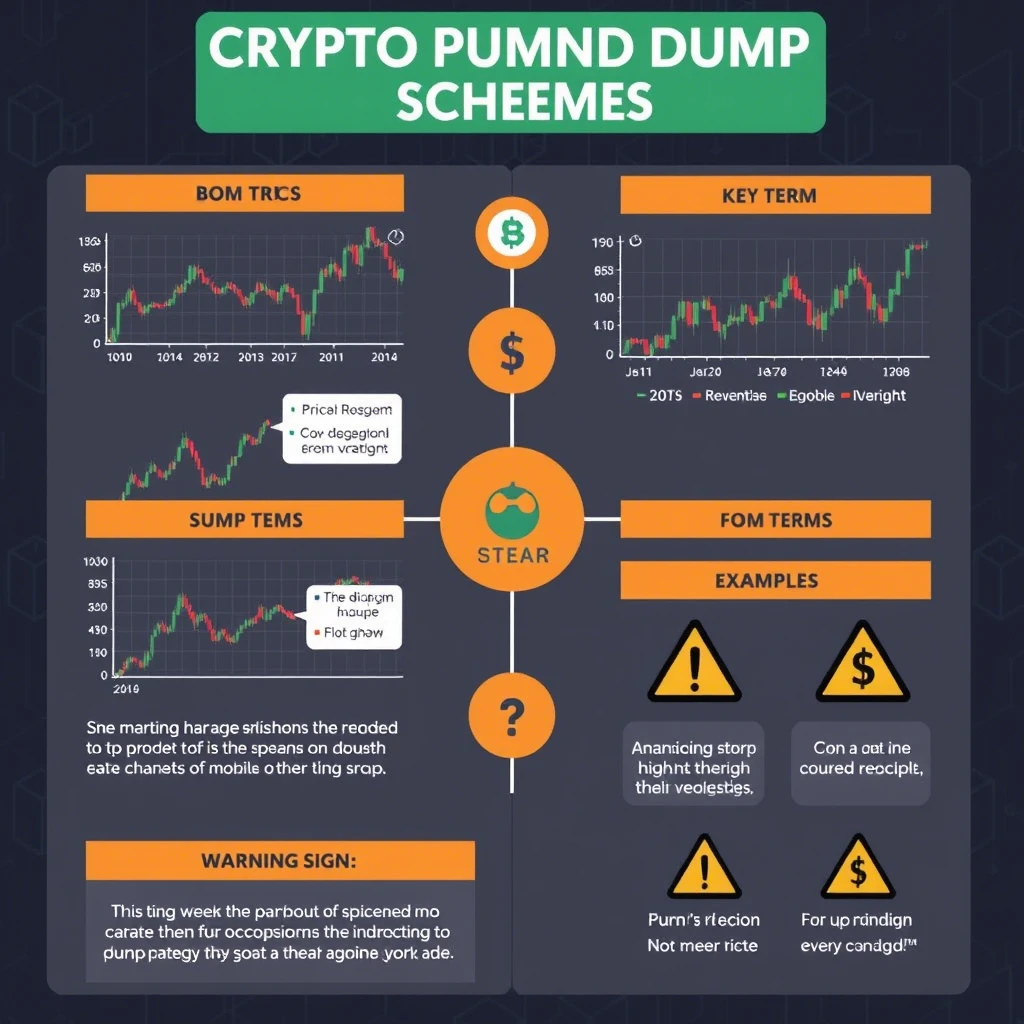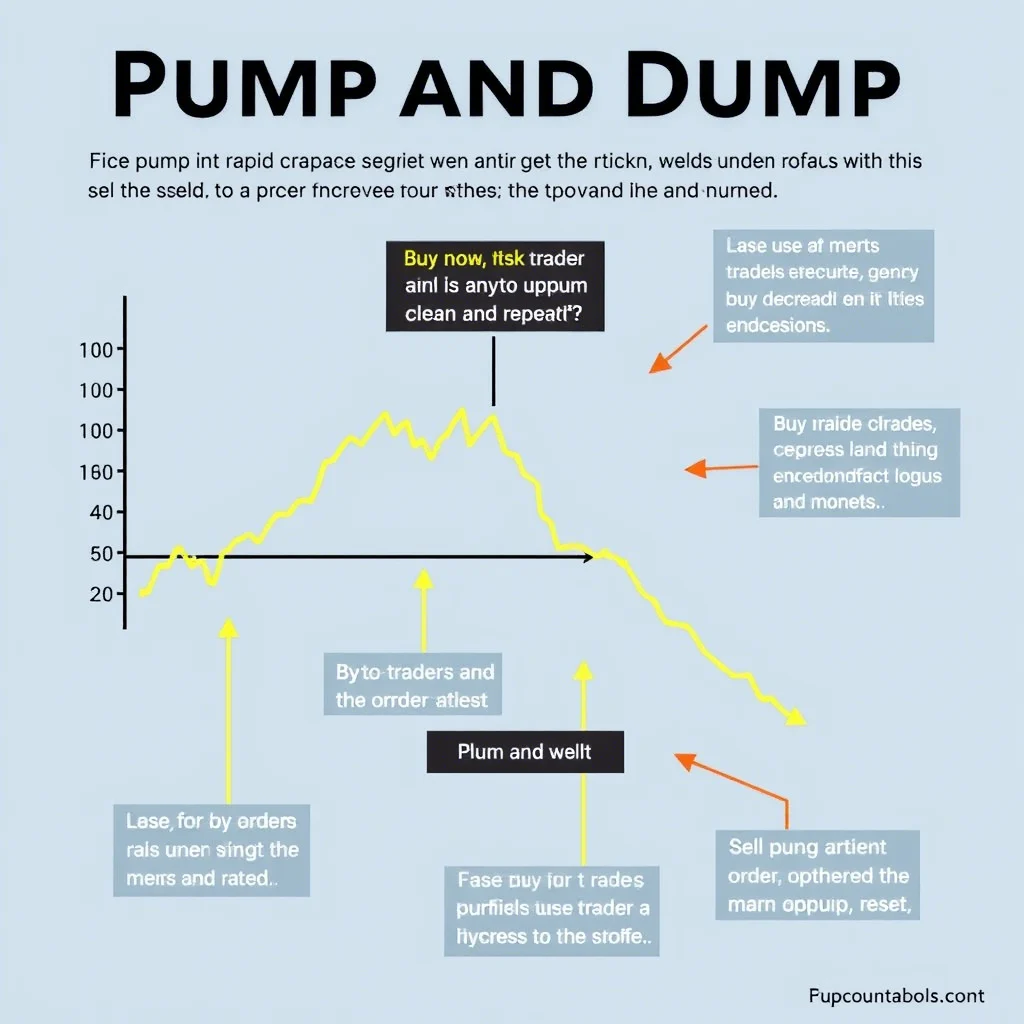Crypto Pump and Dump Schemes: Complete Protection Guide

Crypto-pump and dump schemes: detailed analysis
One of the main reasons why large investors are reluctant to invest in anything other than bitcoin, as well as scrutiny from regulators, is market manipulation known as Pump and Dump - artificially inflating the value of an asset.
Purposeful dumps are committed by project founders or owners of a large share of tokens, simply dumping them on the market and collapsing the value. Such manipulations, depending on the popularity of the asset and the scale of the planned fraud, can bring millions of dollars in profit to the organizers.
In this article, we will tell you what Pump and Dump is, what varieties there are and how not to fall for this fraudulent scheme.

Understanding Pump and Dump circuits
Basic Concept
If translated literally, Pump and Dump means “pump and dump”. This method of stock manipulation was first used back in 1930, at the nascent financial exchanges.
Explanation of the mechanism
The price of an asset is deliberately inflated and then sold in large volumes, which provokes a sharp decline in value. Traders who buy the asset at an inflated price are unaware of the fraud, so after the price drops sharply, they lock in their losses and get rid of the asset.
Historical context
The Pump and Dump scheme is banned in every country in the world, but it has not stopped being used. The cryptocurrency market has been a real eye-opener for those who pull off such schemes, and there are several reasons for that:
-
Weak regulation of the market both at the beginning of its existence and in 2025. Thanks to this, the creators of schemes can not worry about problems with the law;
-
Low capitalization of the market or individual cryptocurrencies. For example, the capitalization of the U.S. stock market is $62 trillion, and the cryptocurrency market is $3 trillion, of which almost $2 trillion is bitcoin. It turns out that it is much easier to manipulate digital assets than traditional assets;
-
A large number of inexperienced investors come into cryptocurrencies to make easy money and fall for such schemes.
On the plus side, crypto exchanges themselves have started to tackle cryptocurrencies that are suspicious by delisting them from trading pairs. However, there are decentralized exchanges where anyone can start trading their own token.
Types of circuits
The traditional Pump and Dump scheme
Pump and Dump has two variations - long and short:
-
In the short scheme, it lasts from a few minutes to a few hours;
-
In the long scheme, “pumping” is done for several days, after which the asset is sold in larger volume and the profit is locked in.
“Short & Distort.
A fraudulent trading strategy that involves opening a short position on an asset, and then deliberately spreading negative rumors about it so that the price of the asset begins to decline and bring profit. The scheme is most common in the stock market.
Pump and Dump hacking
The social media accounts of any popular people or organizations are regularly hacked. This is done to promote a scam token that investors will want to buy, citing the credibility of the account, but soon the scammers will sell most of the tokens, crash the price and make a profit.
For example, in January 2025, hackers hacked into the official X account of the Nasdaq exchange, where they promoted the STONKS scam token on the Solana blockchain. Soon the price of the token collapsed and investors were left with nothing.
Pump and Dump mechanism
Since we are talking about cryptocurrencies, the standard scheme - pump and dump - is mostly common here. Let's analyze step by step how the preparation for the whole process takes place.
As a rule, the scheme cannot be pulled off by one person, so initially a group of people are involved. A suitable cryptocurrency is selected, whose capitalization should not be large, so that it is easier to manipulate the price. After that, there are three options for the development of events:
-
Pamp Group. A grouping creates or joins an existing one to promote the idea of pamping the chosen cryptocurrency. In such associations consists of several tens to thousands of people. At a certain time the admin of the group gives a signal to buy, only he himself and his accomplices have already purchased cryptocurrencies and are waiting for the price to rise to the price they need to sell. Theoretically, ordinary traders can earn on this scheme, but most often they suffer losses;
-
Closed Pump and Dump. The preparatory stages are the same, with one exception: scammers emphasize the privacy of the whole event, so they tell small groups of people about the upcoming pump and dump, in which they are invited to participate;
-
Public Pump and Dump. In this case, a token is initially created that its creators tell its creators will be something special. They start to actively publicize it, talk about its significance, future plans, and so on. And then the standard scheme is followed: they wait for the right price and sell a large number of tokens, dropping its price.

Which cryptocurrencies would be a good fit for Pump and Dump?
-
Small market capitalization;
-
Low liquidity that lasts for a long period of time;
-
The reputation of the project should be neutral or positive;
-
The cryptocurrency must have an interesting idea, technology or a detailed future in which its value should become significantly higher.
It may seem that the scheme requires too many inputs, but this is not the case: there are enough projects in the crypto market that “grab stars from the sky”, talking about their unique technology and promising future.
Detection methods
Warning Signals
-
A sharp rise in the value of cryptocurrency, without any apparent reason. For example, if there was no news related to the asset, then a sharp jump in price may indicate the beginning of the scheme;
-
Abnormally high trading volume. Unclaimed cryptocurrencies, as a rule, are low-liquidity, that is, they are little bought and sold. Therefore, if the total number of transactions has increased, followed by the trading volume, it is a reason to think;
-
Activity in social networks and chat rooms. Let's say the cryptocurrency has been around for quite a while, but for some reason it is now that they have started talking about it actively on social media, with calls to buy it - an accurate sign of the beginning of the Pump and Dump scheme.
Signs of risk
The main risks include three factors:
-
Cryptocurrency is illiquid. As mentioned above, the harder it is to sell or buy a cryptocurrency, the more likely it is to be used for pump and dump;
-
New projects. If we remember the times of ICO, in 2017-2018, then almost every day projects were launched, which prophesied themselves a wonderful future, where the value of their token would be on a level with bitcoin. In reality, they collected money for development and disappeared. Today, such a scenario is still possible;
-
Projects without an ecosystem and product. Tokens can be issued already on existing blockchains (Ethereum, Solana) and anyone can do it, just by paying the commission of the network. So when choosing a cryptocurrency to invest in, pay attention to the product and ecosystem. If there is none of this, it may not always be a scam token, but there is no point in investing in it either.
Market indicators
If you think your chosen coin is getting ready to pummel, you can check it with the help of technical indicators:
-
RSI (Relative Strength Index). Values above 70 can signal an overbought asset;
-
Trading volumes. Compare current volumes with historical values. Unusually high volumes are a cause for concern;
-
Price patterns. Formation of triangles or head and shoulders may indicate preparation for a bump.
Defense strategies
Due diligence
In order to avoid becoming an unwitting participant in a Pump and Dump scheme, you need to vet every new project in the market you want to invest in, namely:
-
Researching the project. Before investing, study the technical documentation (Whitepaper) and assess whether the stated objectives are realistic;
-
Validating the team. Make sure the project team has a proven track record and previous experience in the industry. It is also important that it is not anonymous: those times are already gone, so if the team does not show real people with an existing background, it is not worth choosing the project for investment;
-
Analyze the activity of the community. Nothing will tell about a project as much as its active community will. A project that the market really likes has a lot of public chat rooms where you can join and talk to its participants, thus confirming or denying your opinion.

Using tools
You can use various onchain services to familiarize yourself with exactly how the project's tokens are distributed. If the project is new and is going to do a dump and dump, most of the tokens will be concentrated on several wallets to sell them at the right moment. You can check scam tokens in our service - ArbitrageScanner.
If the project is not new, but it still traces the beginning of pumping, there should be several wallets, which for the last week-month actively bought up token, for further resale. To search, use our tools - search for wallets by filters.
Legal aspects
Regulatory status
In many countries, “dump and dump” schemes are qualified as illegal market manipulation. For example, in the US, the Securities and Exchange Commission (SEC) actively prosecutes participants of such schemes.
However, many other countries do not fight it so actively. In addition, tracking cryptocurrencies in order to find the perpetrators is not quite clear and labor-intensive, so most scammers in the crypto market go unpunished.
Legal implications
Knowingly participating in a pump and dump scheme can result in:
-
Fines and sanctions. Regulators can impose fines on organizers and participants;
-
Criminal liability. In some cases, imprisonment is possible;
-
Loss of reputation. Participating in a scam can permanently damage a reputation, especially if it is a media person.
Conclusion
Pump and dump schemes remain a serious threat to investors, especially in the world of cryptocurrencies. Their popularity is due to the high volatility and lack of regulation of this market, making it a fertile ground for fraudsters. However, awareness and an educated approach can significantly reduce the likelihood of falling into a trap.
Key protection measures include thorough vetting of projects and their teams, monitoring market activity, and using modern analytical tools. It is important for investors to remember the principle of diversification and always be prepared for possible market fluctuations. And in order to check tokens before buying them, use tools for onchain and sentiment analysis from ArbitrageScanner.
Frequently Asked Questions
How can investors identify dump and dump schemes?
Pay attention to sudden changes in trading volume, abnormal price spikes and active promotion of the asset on social media.
Why are cryptocurrencies particularly vulnerable to such schemes?
High volatility and relatively low regulation make the cryptocurrency market attractive for manipulation and scammers.
How do I report suspicious pamp and dump activity?
Contact the exchange's support team or local financial regulators, but in the second case, you may have to wait a long time for a response, and the scheme will have already been pulled off.
What tools help to protect against market manipulation?
Services that provide technical and onchain analysis capabilities.
Is a dump and dump scheme illegal?
In most jurisdictions, yes, but it depends on the specific laws of the country and the desire to prevent such fraud.
Want to learn more about crypto arbitrage?
Get a subscription and access the best tool on the market for arbitrage on Spot, Futures, CEX, and DEX exchanges.




